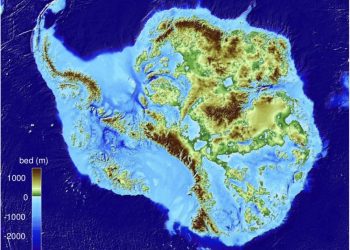From brightening clouds to reflecting sunlight, or submerging seaweed to capture carbon, these ideas have sparked intense debate about their feasibility, risks, and ethics.
As explained by Earth.com at the forefront of this conversation is the University of Chicago, which recently recruited physicist David Keith to lead a bold new climate engineering initiative. Keith’s mission is to assemble a multidisciplinary team to explore the complexities of geoengineering, recognizing that individual efforts won’t suffice in tackling such a vast issue. “Collaboration is key,” Keith emphasized. “Only by bringing together diverse perspectives can we truly assess the potential of geoengineering.”
One of the most hotly debated proposals is solar radiation management (SRM), a technique that involves releasing aerosols into the atmosphere to reflect sunlight. This method is inspired by volcanic eruptions like Mount Tambora in 1815, which cooled the planet by blocking solar radiation. While SRM could theoretically reduce global temperatures, it also comes with severe risks.
Physicist Peter Irvine, who recently joined Keith’s team, notes that SRM could offer a temporary solution but cautions that the side effects could be profound. “This method could be implemented quickly, but we must consider the unintended consequences before moving forward,” Irvine explained.
Is Geoengineering a Shortcut or a Necessary Evil?
Critics argue that geoengineering could become a dangerous distraction, allowing nations or corporations to delay meaningful action on reducing emissions. But with emissions continuing to rise, some experts believe we may not have the luxury of waiting for decarbonization efforts to succeed.
“We’re not going to reach global decarbonization as quickly as we’d like,” said microbiologist Manon Duret, another member of the UChicago initiative. “We need to explore alternative options now if we hope to limit the worst impacts of climate change.”
Keith, who has been researching geoengineering for decades, emphasizes the need to balance emissions reduction with pragmatic solutions. “Cooling the Earth could buy us time to address deeper issues, like inequality and sustainable development,” he said. However, even advocates acknowledge that geoengineering is a temporary fix, not a long-term solution.
Oceanographer B.B. Cael, who works alongside Duret, is focused on assessing the logistics and risks associated with different geoengineering techniques. “It’s not just about what works in theory,” he explained. “We need to understand the costs, scalability, and potential side effects of each approach.”
The Danger of Relying on Solar Geoengineering
One of the biggest concerns surrounding geoengineering is the potential for termination shock—a rapid increase in temperatures if interventions are suddenly stopped. This continuous reliance on aerosols would place an enormous burden on future generations, forcing them to maintain geoengineering indefinitely.
Raymond Pierrehumbert, a climate scientist from the University of Oxford, warns that such dependence could create new global inequalities, with wealthier nations potentially taking control of the technology. Pierrehumbert, along with over 500 other scientists, has called for an international ban on solar geoengineering until its full risks are understood. “We can’t afford to create a system where the future of the planet depends on maintaining risky, untested technology,” he warned.
Despite these concerns, Keith believes that avoiding research on geoengineering could be just as dangerous. “If we ignore this field, we risk a desperate nation trying it on their own, without proper oversight or understanding,” he said. Some nations, like China, have already dabbled in weather modification, raising fears of unilateral action.
Keith’s goal is to foster a global dialogue on geoengineering, ensuring that research is transparent and accessible to the public. “This isn’t something that should be left to a small group of scientists,” he emphasized. “We need to equip policymakers and the public with the knowledge to make informed decisions.”
While geoengineering remains a controversial topic, the scientists involved in UChicago’s program agree on one thing: we cannot afford to be unprepared. “The climate crisis is unfolding faster than we can fully comprehend,” Irvine said. “We need to explore all options, even the uncomfortable ones, if we hope to avoid catastrophe.”
As the planet races toward uncharted territory, the question remains: can geoengineering provide the breathing room we need to address the root causes of climate change, or will it open the door to even greater risks?
Join the Conversation!
Have something to share or discuss? Connect with us on Facebook and join like-minded explorers in our Telegram group. For the latest discoveries and insights, make sure to follow us on Google News.











